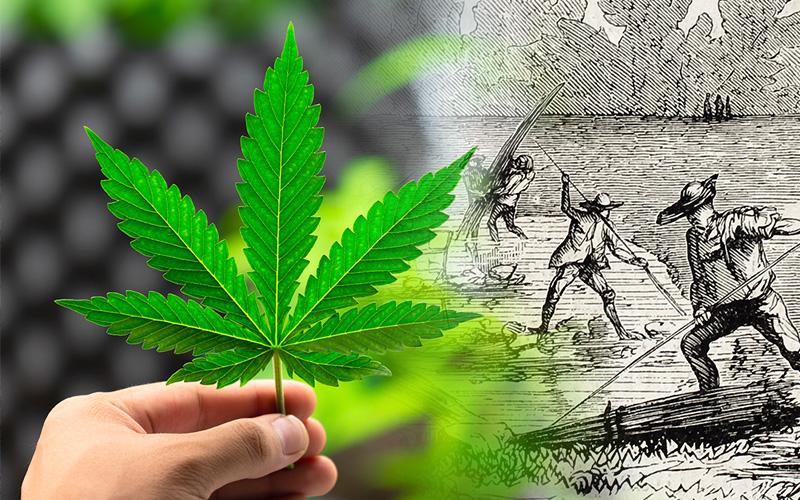The history of CBD is a surprisingly long one, that has led to the discovery of one of the most exciting and beneficial compounds of the cannabis plant: cannabidiol (CBD). Much of the history of CBD is still unclear, but what is known is that in the early days of cannabis research, CBD was a prominent compound found in cannabis.
CBD’s long history can be traced back to its first discovery as a bioactive compound; the 1940s. During this time researchers were able to isolate CBD from marijuana and document its effects both in vitro and in vivo. Unfortunately at this time the stigma surrounding cannabis was so great that researchers could not legally continue their work. This led to a halt in cannabis research for nearly 50 years.
Fortunately, in the late 1960s a researcher by the name of Mechoulam, who had previously studied THC, was able to rekindle his early interest in cannabinoid research. In 1964, Mechoulam managed to extract a significant amount of CBD from hashish samples he had acquired. After administering the extracted CBD to lab mice, he found that CBD inhibited convulsions, but did not produce any psychoactive effects.
These findings sparked a new wave of interest in CBD among scientists who wanted to study the properties of this newly discovered compound. Many began carrying out their own research into CBD and its effects on humans.
CBD has been shown to have a wide range of potential benefits, many of which are supported by scientific evidence. These include:
As well as these health benefits, there is also evidence that CBD can help with symptoms of anxiety and depression, stress and neurodegenerative disorders (such as Huntington’s disease and Alzheimer’s disease), nausea and vomiting, psychosis disorders, rheumatoid arthritis and bone disorders, asthma and even nausea in cancer patients.
Unfortunately, some of these potential benefits have been inhibited by the stigma surrounding cannabis use and government legislation against cannabis users. For example, despite laws being relaxed in many states in the USA, CBD derived from cannabis is still illegal at a federal level. This is because it is considered an illegal schedule 1 drug by the DEA.
CBD has also been shown to have many benefits from an economic perspective. It is estimated that the market for consumer CBD products will reach $2.1 billion by 2020. This is because of CBD’s numerous potential uses and its ability to provide relief for many diseases and conditions. Unfortunately, some of these potential uses have been inhibited by a lack of legislation around the use of medical marijuana. The use of medical marijuana for recreational purposes is still illegal in many states in America due to the stigma surrounding marijuana use, and federal laws against cannabis users.
Our understanding of CBD has advanced significantly since the compound’s discovery in the 1940s.
In the 1940s, researchers discovered that CBD was a bioactive compound within cannabis, leading to its isolation and identification. Since then, a huge amount of research has been carried out into CBD.
In the 1970s, research into CBD became more prevalent as researchers began to notice its effects on humans. This led to more extensive research into its potential uses as well as further research into the mechanism of action of CBD.
In the 1980s, research into CBD and cannabis became more difficult due to the stigma surrounding cannabis use and the government’s classification of marijuana as a schedule 1 drug. This meant that studies involving marijuana and cannabinoids were extremely limited.
In the 1990s, research into CBD and cannabis began to increase again. This was due to a significant increase in the number of states in America in which cannabis was legalized as well as a general relaxing of attitudes towards cannabis users. This led to an increase in consumer interest in cannabis products, which caused a resurgence of interest in medical marijuana research.
In the 2000s, research into CBD continued. During this time, researchers began to study CBD’s potential medicinal uses and its specific mechanisms of action. This led to further discoveries surrounding the health benefits of CBD.
In the 2010s, CBD research has continued to increase due to increasing public interest in medical marijuana and its potential benefits. This has led to many new studies being carried out around CBD and its potential health benefits, and has led researchers to discover new ways in which CBD can be used (such as in skin care products and food items).











